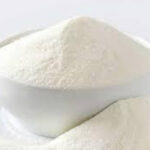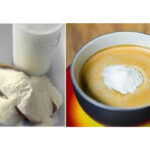- Home
- portfolio
- Turnkey Plants
- MALT EXTRACT POWDER PLANT
MALT EXTRACT POWDER PLANT
Turnkey Plant
- Aloe Vera Powder Plant
- Coconut Milk Powder Plant
- Egg Powder Plant
- Fish Protein Hydrolysate Powder Plant
- Fruit Powder Plant
- Ice-Cream Mix Powder Plant
- Lactose Powder Plant
- Malt Powder Plant
- Microcrystalline Cellulose Powder Plant
- Non-Dairy Creamer Powder Plant
- Pectin Powder Plant
- Soy Milk Powder Plant
- Sugarcane Juice Powder Plant
- Tamarind Extract Powder Plant
- Zinc Sulphate Powder Plant
- Zero Liquid Discharge System
MALT EXTRACT POWDER PLANT
The term “malt” refers to cereal grain, which has been “malted.” If the type of grain in question isn’t specified, it will likely be barley malt in Europe and America and Ragi in India and Asian countries, but you can use other cereal grains. Each different kind of grain offers its distinct characteristics.
The global malt market can be broadly segmented on the basis of type, application, brewers, and source. On the basis of type, the malt market can be classified into-Dry Extract, Liquid Extract, Malt Flour. On the basis of application, the malt market can be segmented into-Beer Industry, Whisky Distilleries, Food & Beverages, and Pharmaceutical industry. On the basis of brewers, the malt market can be segmented into- Base Malt, Standard Malt and Specialty Malt. On the basis of source, it can be segmented into-Barley, Wheat, Rye.

ADVANTAGES AND USAGE OF MALT EXTRACT POWDER
- Spray Dried Malt Extract powder has long shelf life whereas syrup is highly perishable.
- Finger millet malt powder is good source of minerals specially calcium, phosphorus and iron. According to experimental study, cancer patients feed with enriched finger millet malt has improved their nutritional status.
- Finger millet is very good source of micronutrient which could alleviate the wide spread micronutrient malnutrition in the vulnerable segments in the developing countries.
- Malt Extract powder is used as natural sweetener that can substitute sugar, is easily soluble in water and rich in nutrients and flavour.
- selection of malt and cereal extract powders are widely used in confectionery, pharmaceutical and malted foods sectors
- Malted beverages are popularly known as health drinks in India. While marketers have positioned such beverages as nutritious drinks, these are widely consumed as taste enhancers to encourage drinking of milk among growing children.
- Food applications include baked products, especially those that require browning or colour development such as bagels, pretzels and pizza crusts.
- Malt extracts are the main source of flavour and colour in many breakfast cereals.
- Malt extract and malted milk powder are also used in confectionery, frozen desserts and non-alcoholic beverages.
- Malted milk balls, candy bars, all derive flavour and functionality from malted barley products.
- In many Caribbean, African and Middle Eastern countries, carbonated malt-based beverages are very popular.
- It’s a common ingredient used to improve the palatability of pet and human medicines.
- It’s used in nutrient broths and agar for growing or culturing microorganisms.
- Malt extract powders are used in Pharmaceuticals –Tonics, Health foods, slim diets
PROCESS DESCRIPTION:

1 RECEIVING, SELECTION AND DEHULLING OF GRAINS
To maximize the process output of grain, hulls need to separate from their kernels efficiently. The hulls can be separated manually or help of compact machines which gently removes hulls and collects in the bag house for use as cattle feed or for preparation of briquettes used in the boiler of same plant.
2. STEEPING OF GRAINS
Soaking the grains in water containing predetermined amounts of chemicals for 12-24 hours. Water is replaced every 4 to 6 hours in order to get proper moisture in the grains. The used water is recycled through water treatment facility. After grains gaining enough moisture remaining water is seeped out and grains are transferred for germination.
3. GERMINATION, KILNING AND ROOTLETS REMOVAL
Steeped grains are poured and properly spread on the germination floor. The Grains are kept moist by blowing cool and moist air from the grain bed. The process of replacement of grains within the grain bed and done automatically with the help of augers. This process continues for 4 to 5 days depending upon local ambient conditions.
Once grains are properly germinated and rootlets are big enough germinating process is halted by passing hot air through germinated grains. The hot air temperature is decided on the basis of Diastatic or Non-Diastatic Malt extract powder production. The Drying and rootlets removal process if automatic. The germinated grains are pneumatically conveyed to hopper from where they are fed in Rotary Dryer. In Rotary Paddle dryer moisture in the grains is removed to the level that rootlets will be removed automatically and the grains are then sifted to get dried malt grains.
4. MALT GRAIN MILLING AND MASHING
The malt received after removing rootlets is sent for dry grinding. Usually Roller mill or Hammer mill as per customers choice ae used. Both are having its distinct advantages over each other. Dry milled malt powder is then sent for mashing where water is added continually for making Malt Extract slurry and remove shell particles.
Mashed malt solution is then taken into centrifuge to separate non-dissolved particles of specific size. Separated shell solids are continually separated and sent for drying which is used as animal feed.
5. THERMAL EVAPORATOR FOR CONCENTRATION
The plant is specifically designed for concentration of Malt extract solution having hot break technology.
Usually it is a multi-effect (MEE) effect evaporator plant depending upon the capacity. The evaporation time of malt extract solution is totally controlled and is usually a few seconds or a few minutes, the evaporation temperature is low. At such a short time and low evaporation temperature, the composition and the quality of the senses of the product remains intact.

6. FEED PREPARATION:
Concentrated Malt Extract solution is further used as raw feed to Slurry / Emulsion Preparation section. This is a simple process which involves mixing of various ingredients in a proper proportion by auto weighing system. The large tanks with specially designed efficiently mixing and blending agitator arrangement are provided to mix the ingredients. The tanks are also provided with the heating arrangement so as to maintain proper temperature for producing right slurry formulation depending on the ingredients. The feed is homogenized in a specially designed high-pressure homogenizer / colloidal mill.

7. STORAGE AND PACKING:
Product is cooled and in a pneumatic conveying system or Screw Cooler and then passed on to packing machine hopper, where it is continuously packed.
FEATURES:
- Low temperature drying which maintains the qualities of the Malt Extract Powder.
- cGMP construction of equipment to maintain high hygiene level.
- Fully automatic, compact and energy efficient system to ensure smooth and ease of operation.
- Plant foot print is planned as per availability of land from customer.
- Complete sanitary design with CIP system


